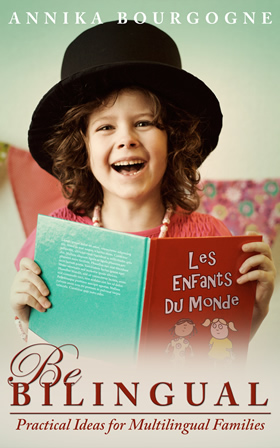I bought “Be Bilingual: Practical Ideas for Multilingual Families” right after I was done with reading “Growing Up With Three Languages” by Xiao-lei Wang. But, as it happens, it took me quite some time to finish reading this wonderful book. Part of the reason is that Birdy’s awake periods have grown longer so we have much more playtime, the other part is my new hobby of binge-watching TV series while breastfeeding.
Annika’s approach to raising children multilingually is more relaxed than that of Xiao-lei who my friend Olga quite fittingly described as “the trilingual tiger mom”. Of course, that doesn’t mean that “Be Bilingual” is any less valuable in terms of tips and ideas for succeeding with family bilingualism. Possibly, quite the opposite.
“Be Bilingual” is divided into two parts:
- Planning it out,
- Putting it into action.
The first part outlines the book’s understanding of bilingualism and its benefits, as well as gives information and advice about setting goals and choosing the most appropriate strategy for your family. It also deals with several special situations, e.g., raising bilingual children in a non-native language, international adoption, or achieving bilingualism as a single parent.
The second part of the book is practical – it comprises advice for practically applying the family strategies, gives a variety of tips for reinforcing the minority language, as well as discusses several problems typical for multilingual families and possible ways of dealing with them.
I enjoyed that each chapter is split into two parts. “Words from the wise” encompass research findings and expert opinions, while “View from the front lines” and “Tried & Tested” comprise information and tips from other parents raising bilingual kids.
Overall, this book is intelligent and research-based, yet also very approachable and adaptable to real-life situations. The style of “Be Bilingual” made me feel a little like having a friendly chat with a friend over a cup of tea. With a friend who’s resourceful and has a lot of experience in bilingualism, that is.
While I’m sure that many of the ideas and tips from this book will come in handy later, reading it also made me a little sad. You see, there are so many great ideas and good resources out there but, Latvian being a language with just over a million native speakers worldwide, they are difficult to adapt to our situation.
